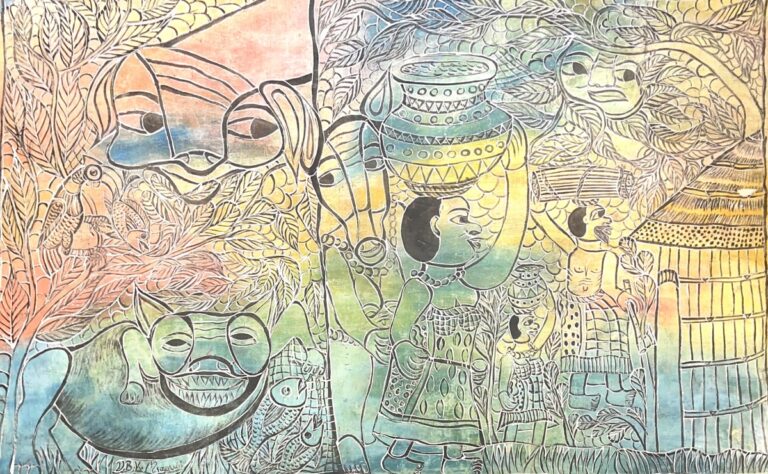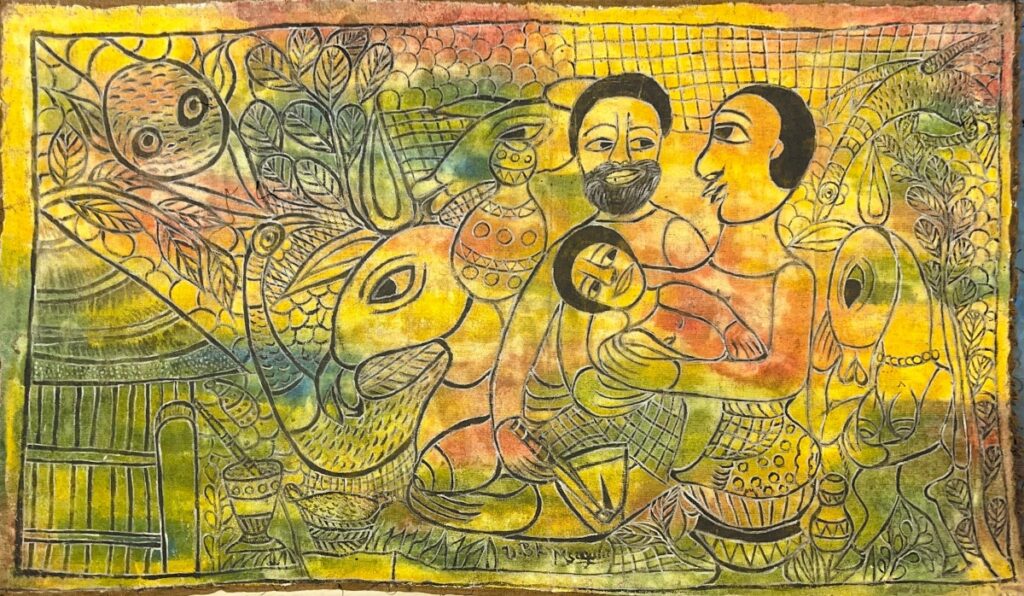Damian Msagula II & III


Untitled II
Artist: Damian Boniface K. Msagula
(Tanzania, 1939 – 2005)
190 x 104 cm (approx.)
Mixed media on canvas
Year unknown
Untitled III
Artist: Damian Boniface K. Msagula
(Tanzania, 1939 – 2005)
198 x 110 cm (approx.)
Mixed media on jute
Year unknown
These two paintings are good examples Msagula’s technique which we call three layer images, consisting of: Line drawings, abstract color pattern and the interaction between them. Both paintings contain human and spiritual beings, animals and artifacts that can be found in many of his works. Through his technical choice one cannot discern his pictorial language immediately, but your eye has to search for the images. This gives his work a surreal, dreamlike atmosphere. If you look closely, you will discover more items.
What do they mean, and do they mean the same to all of us? Does the artist dictate the meaning, or is it up to the viewer or a dialogue?
Although these two paintings use a similar technique and contain much of the same visual images, the paintings have a very different feeling. This can be attributed to the material on which the works are painted. The two fabrics therefore also absorb the paints differently. Jute has a rough loose weave and the paint does not close the surface and the grid stays visible. The cotton canvas is tighter woven and the paint therefore covers the structure of the fabric and creates a smooth painting.
The effect of the choice of canvas together with the tones of the colors, accentuate different images on the paintings playing with physical and immaterial reality.
There was a period when Msagula used (Coral) house paint in his work, particularly during his time at Tinga Tinga. While the exact type of paint he used in later years remains unknown, it is well-documented that he was renowned for creating his own paints using natural pigments. It is believed that his paints were derived from these natural sources, and as such, cleaning them in the same manner as oil paints may risk removing or altering the original pigments.
In these two works, Msagula allows both the lines and the colors to exist freely, unrestrained by conventional form. Take a moment to follow the lines and see what emerges as you trace their path. Notice how the black and silver paint creates a dynamic, living quality to the lines themselves.
Throughout both paintings, recurring themes emerge: a family of three, a bearded man, a monkey-headed human figure, birds, necklace and leaves.
Observe how these elements are interwoven, connected not only through the lines but also through the eyes, creating an intricate web of visual relationships.
Once an artwork is completed and enters the world, the artist no longer holds control over its meaning. I would argue that the significance of a symbol is never solely defined by the artist, but rather emerges through the interaction between the work and the viewer. Msagula frequently incorporates owl faces into his paintings, a symbol whose cultural meaning varies across different societies, from a bad omen to a sign of wisdom. It is through the viewer’s personal connection to the artwork that the interpretation is shaped, highlighting how meaning is co-created in this dynamic relationship.
Msagula uses the owl often in his paintings, mostly not colored in but free floating. An owl has a very different meaning in different parts of the world, a rather bad omen or a sign of wisdom
